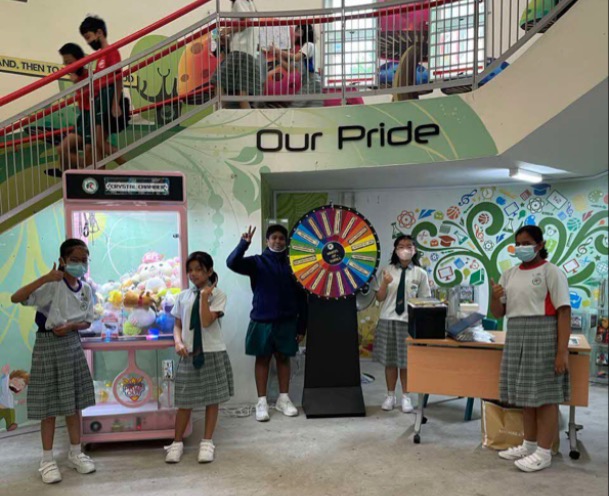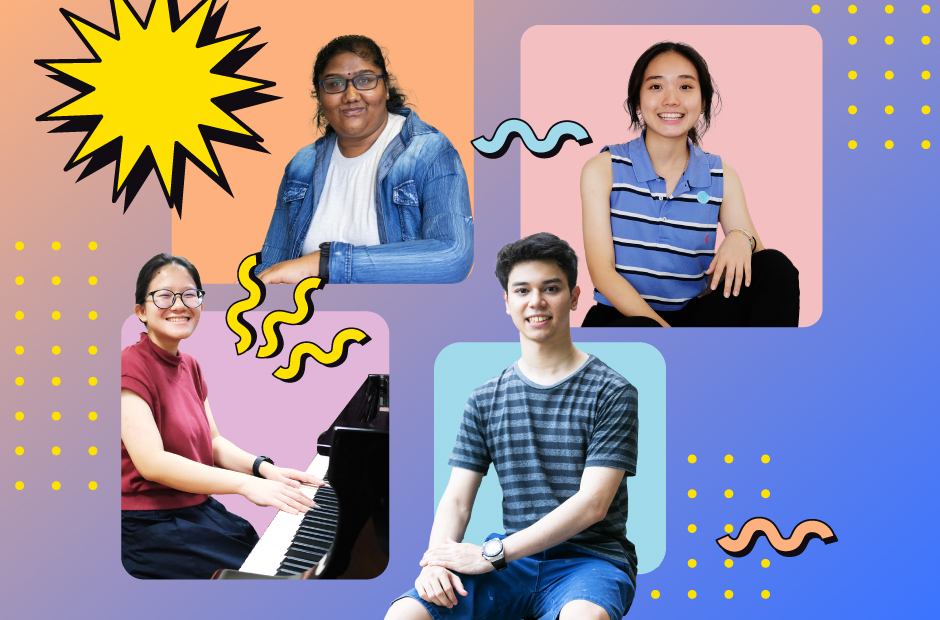In his hands, a diagram with mind-changing powers
30 Sep 2022
.jpg)
Knowing how to get through lessons and life doesn’t come naturally, so Dunman High School’s Teo Joo Cheong designed a learning model to guide his students’ way.
Teo Joo Cheong, Dunman High School, President’s Award for Teachers 2022 Finalist
There is a digital diagram of concentric circles and a checklist that Teo Joo Cheong carries on him all the time that has been coming in handy.
Joo Cheong, the Humanities Head of Department at Dunman High School, has seen its multiple powers of late – to change minds, inspire independence, launch a quest for answers, and even prepare students for the ultimate test – the school of life.
In fact, it is so useful and easy to understand that his school applies it to anything from weak essay-writing to CCA planning.
What is this seemingly magical tool that is deployed whenever students – and even his colleagues — need a nudge or some clarity of thought?
He calls it the Self-Directed Learning Model (SDLM), launched last year after a year in the making with some colleagues.
-1-(1).jpg)
But the idea likely took root over 10 years ago at Joo Cheong’s previous school posting. There, he taught more than a few students who lacked lustre at their books but were more than adept when tackling life’s inevitable curveballs. Today, one of them is still pushing on with his singing career despite doors closing in his face during the COVID-19 pandemic, while another student would go on to excel in his military career and earn an MBA while he was at it.
“These are all examples of lifelong learning that inspired and convinced me that being singularly focused on grades in school is counter-productive,” says the educator of 16 years. “Being self-directed in learning – like what my ex-students are doing today – is the real valuable skill I need to help my students develop.”
How SDLM guides Dunman’s students
When Joo Cheong decided that a framework would be helpful to guide students in all kinds of self-directed learning – not just in relation to schoolwork – he sourced for ideas.
He found resonance in both the Ministry of Education’s Framework for 21st Century Competencies and Student Outcomes and the work of famed American academic Gerald Grow. He then pulled together a team to brainstorm on a version that supports broader goals.
The result? The SDLM, a poster of which now hangs in every classroom at the school.
Essentially, the SDLM guides students towards better problem-solving and decision-making. It encourages information gathering, checking against one’s beliefs and reality, and boldness to take action.
Its rings of words offer cycles of self-affirming mantras such as “I am receptive to feedback and willing to adjust my thoughts and actions”, and “I think about my own thinking”.
To further the point, the poster also features a table that lists the traits of a self-directed learner (“reflects on and analyses what is taught”, “learns actively”, “sees setbacks as opportunities to learn and improve”, etc.), juxtaposed against those of a dependent learner (uncritical, passive and avoids setbacks).
The poster ensures everyone is on the same page and share the same language when discussing their next steps in learning. “Self-directed learning is not about getting them to do everything themselves. It needs to be adjusted to where the students are,” Joo Cheong explains further.
In the area of “Self-motivation”, for “taking on new challenges” in History, for example, teachers of Year 1 students may align with the model by providing a greater amount of direction with a research project, and thereafter offer greater autonomy by allowing students to choose their topic of study or how they want to learn.
He elaborates, “When students are stuck at a new topic or experience, the teacher should give instructions, but once they become more interested, we become more of a motivator. When they are very driven to explore things on their own, we can be a facilitator.”
First a framework, next an eye-opening checklist
To help with “Self-monitoring”, students are given a diagnostic checklist. They score themselves in various areas, such as whether they can identify their own strengths and weaknesses and if they can break a given project into smaller tasks.
The framework and checklist have helped teachers to identify situations where students may need more help.
In one instance, Joo Cheong saw how one student had scored herself lowly in the area of “willingness to help others even when faced with obstacles”, which prompted him to speak to her. She was highly competitive about her grades, and acknowledged her reluctance to help her classmates with their homework. “She thought she shouldn’t help others because she needed to do better than them. It was a zero-sum game for her,” he says.
Over time, Joo Cheong opened her to a new perspective, that coaching her peers can also reinforce her own learning too. A shift in mindset led to a change in behaviour – the student found joy in helping others. He adds, “Hopefully that will serve her well in life.”
Critical thinking is key
Indeed, the real magic of SDLM lies in its ability to help students develop strength of character. Hence, “we’re trying to go beyond academics and see how CCA teachers can use the model to design the leadership experience for their students”, says Joo Cheong.
To better measure its success, he is also looking to incorporate a concerted e-journaling effort so students can reflect on their learning experiences.
The SDLM has also proven useful to spur critical thinking. Joo Cheong developed a complementary set of analytic rubrics to help his History students improve their argumentative techniques. This was derived from a marking scheme for teachers, but he reckoned it could also be student-friendly.
.jpg)
“It essentially helps students understand what makes an essay good,” he explains. It lists criteria such as focus, balanced viewpoints, depth, coherence and accuracy of evidence, among other easy-to-understand elements.
Not only can students use this method of assessment on their own essays, but it can also be applied to pieces of writing outside of the classroom.
Bringing the spirit of inquiry to the community
When not dabbling with diagrams and metrics, Joo Cheong likes to challenge students on the spirit of inquiry. He applies Socratic questioning — such as questions that challenge assumptions and probe for alternative perspectives — to draw out his students’ view of world events and inspire deeper thinking.
“What we love and remember are the life lessons, the things teachers said that made us change our perspective.”
For more motivated students, he mentors them on independent research on topics they are passionate about. “Being able to do independent research offers an important learning experience where students can both be problem identifiers and solvers to help them hone important dispositions for ‘doing life’,” he says.
The same spirit of inquiry spills over to the community engagement projects that he leads as part of the curriculum for Active Citizenry Education (the school’s equivalent of Social Studies).
In the “Adopt-a-Hood” programme, a pilot partnership with the Municipal Services Office, four groups of Year 3 students are tasked with identifying problems faced by residents in the Jalan Batu neighbourhood — they conducted virtual interviews with grassroots leaders, Town Council members and even a Member of Parliament — and proposing solutions to counter them.
These students are in the midst of devising campaigns to combat noise and littering; one group is even looking at reviving the community garden to enhance bonding among residents.
Bringing such authentic learning experiences to students, and in the process gifting them a sense of purpose, is a vital way that Joo Cheong helps young minds find wisdom in tandem with knowledge. And how does he know when he’s succeeded?
“What makes me proud is when my students graduate and walk away from school confident and eager to explore the world,” he says. “When they come back and say, thank you because your lessons helped me face what’s out there, that makes me happy.”
This reinforces his conviction that education has to go beyond knowledge. “Most of us can’t remember our history grades or what our teacher taught in class. What we love and remember are the life lessons, the things they said that made us change our perspective,” he says plainly. “This stays with you.”



.jpg)
.jpg)
.jpg)